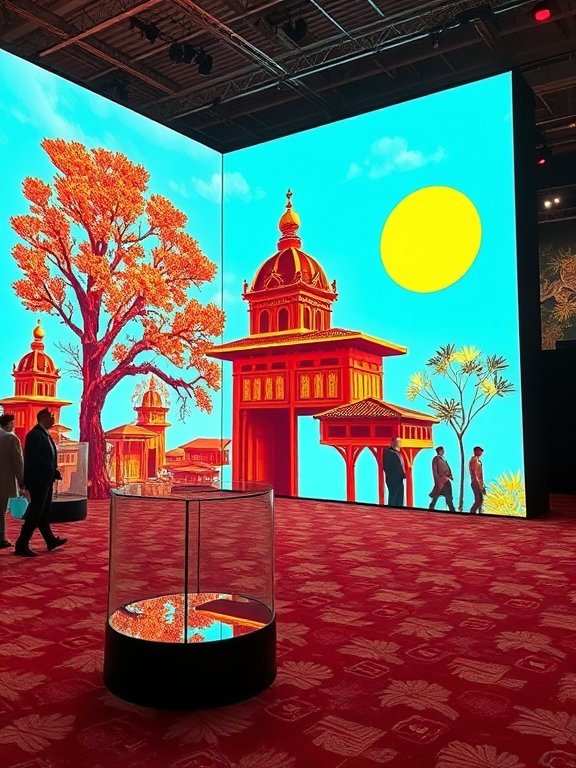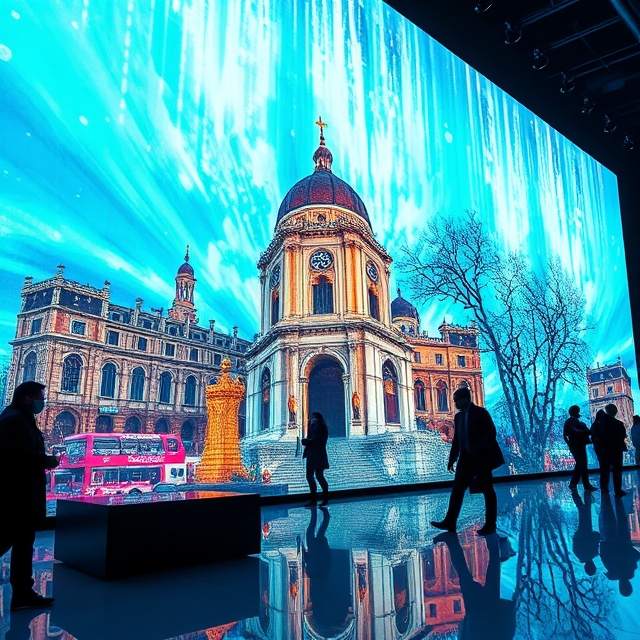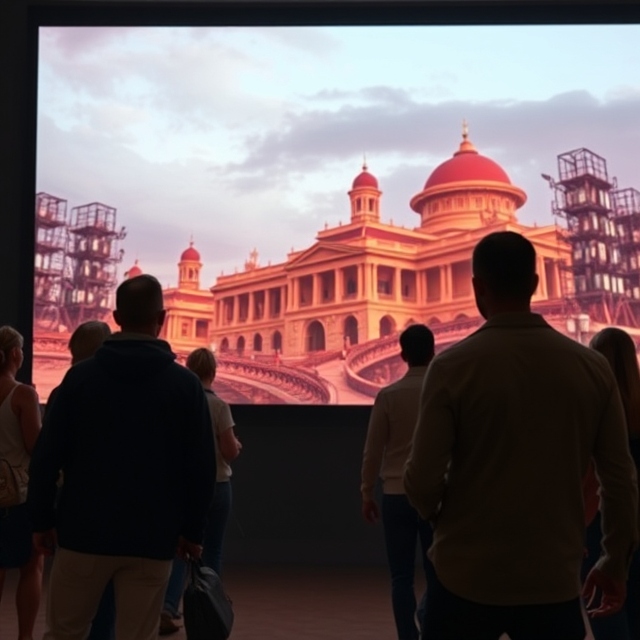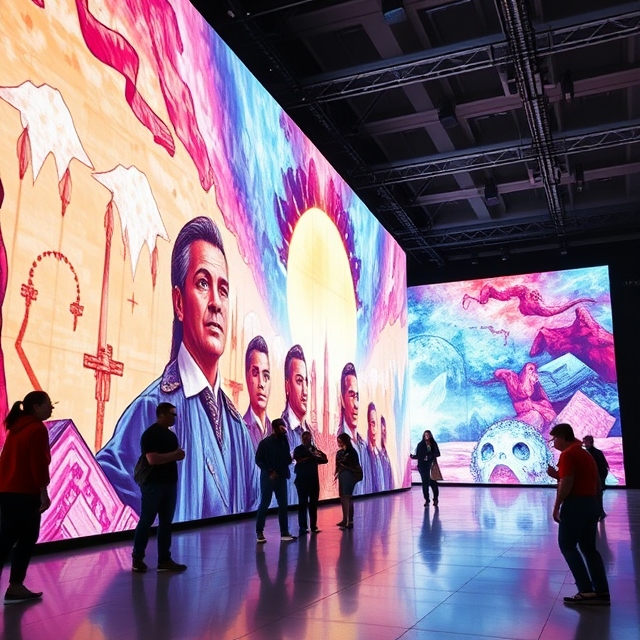- Home
- About Us
- Industries
- Agritech & Smart Farming
- Aquariums & Zoos
- Art & Cultural Exhibitions
- Automotive & Transportation
- Broadcasting & News
- Construction & Real Estate
- Corporate & Offices
- Cultural Heritage & Preservation
- Cybersecurity Operations
- Digital Content Creation & Media
- E-commerce & Online Retail
- Education
- Energy & Utilities
- Entertainment & Media
- Entertainment Arcades & Amusement
- Environmental Monitoring
- Event Management & Conferences
- Fashion & Apparel Retail
- Fashion Retail & E-commerce
- Finance & Banking
- Financial Trading & Stock Exchanges
- Fitness & Wellness
- Food & Beverage
- Food Processing & Manufacturing
- Gaming, Casinos, & Hospitality
- Government & Public Spaces
- Healthcare
- Hospitality & Event Venues
- Insurance
- Legal & Judicial
- Libraries & Community Centers
- Logistics & Supply Chain
- Luxury Cruise & Maritime
- Manufacturing & Industrial
- Meteorology & Climate Research
- Military & Defense
- Mining & Extraction
- Museums & Cultural Centers
- Non-Profit Organizations
- Oil & Gas Industry
- Professional Training & Development
- Public Health & Awareness
- Public Parks & Recreation Areas
- Public Safety & Law Enforcement
- Public Transportation
- Rehabilitation Centers
- Religious & Worship Spaces
- Renewable Energy
- Retail & Shopping Malls
- Retail Banking
- Security & Surveillance
- Social Media & Digital Marketing
- Sports & Stadiums
- Smart Cities & Urban Planning
- Supply Chain & Inventory
- Television & Film Production
- Travel & Hospitality
- FAQ
- Contact Us
- Home
- About Us
- Industries
- Agritech & Smart Farming
- Aquariums & Zoos
- Art & Cultural Exhibitions
- Automotive & Transportation
- Broadcasting & News
- Construction & Real Estate
- Corporate & Offices
- Cultural Heritage & Preservation
- Cybersecurity Operations
- Digital Content Creation & Media
- E-commerce & Online Retail
- Education
- Energy & Utilities
- Entertainment & Media
- Entertainment Arcades & Amusement
- Environmental Monitoring
- Event Management & Conferences
- Fashion & Apparel Retail
- Fashion Retail & E-commerce
- Finance & Banking
- Financial Trading & Stock Exchanges
- Fitness & Wellness
- Food & Beverage
- Food Processing & Manufacturing
- Gaming, Casinos, & Hospitality
- Government & Public Spaces
- Healthcare
- Hospitality & Event Venues
- Insurance
- Legal & Judicial
- Libraries & Community Centers
- Logistics & Supply Chain
- Luxury Cruise & Maritime
- Manufacturing & Industrial
- Meteorology & Climate Research
- Military & Defense
- Mining & Extraction
- Museums & Cultural Centers
- Non-Profit Organizations
- Oil & Gas Industry
- Professional Training & Development
- Public Health & Awareness
- Public Parks & Recreation Areas
- Public Safety & Law Enforcement
- Public Transportation
- Rehabilitation Centers
- Religious & Worship Spaces
- Renewable Energy
- Retail & Shopping Malls
- Retail Banking
- Security & Surveillance
- Social Media & Digital Marketing
- Sports & Stadiums
- Smart Cities & Urban Planning
- Supply Chain & Inventory
- Television & Film Production
- Travel & Hospitality
- FAQ
- Contact Us

Art & Cultural Exhibitions

Uses Of Led Display For Art & Cultural Exhibitions
Active LED displays are transforming the way art and culture are showcased in galleries, museums, and exhibitions. These displays offer a dynamic, engaging, and interactive experience, allowing visitors to engage with art in new and innovative ways. From providing immersive visual effects to offering real-time updates, LED displays enhance the art viewing experience and provide opportunities for artists and curators to explore new dimensions of creativity.
Benefits of Active LED Displays in Art and Cultural Exhibitions
- Immersive and Dynamic Visuals:
LED displays can bring static artworks to life with dynamic visuals, animations, and projections, creating immersive environments that captivate visitors. - Interactive Experiences:
Interactive LED screens can allow visitors to engage directly with exhibits, triggering videos, soundscapes, or animations by touch or motion sensors. - Real-Time Information Sharing:
Displays can be used to provide real-time updates about exhibition schedules, artist backgrounds, and context for the artwork, enriching the visitor experience. - Multi-Sensory Engagement:
LED displays can integrate with other sensory elements, such as sound and lighting, to create a fully immersive experience that draws the audience deeper into the exhibit. - Enhanced Accessibility:
Active LED displays can provide accessibility features such as audio guides, translated text, or even sign language videos, making exhibitions more inclusive for diverse audiences.
Applications of Active LED Displays in Art and Cultural Exhibitions
- Digital Art Exhibitions
Purpose: To showcase digital art, interactive installations, and video art.
Content Ideas:
- Interactive Art Pieces: Allow visitors to interact with digital art by using touchscreens or motion sensors that alter the artwork in real time.
- Projection Mapping: Use LED displays to project animated visuals onto walls, sculptures, or physical spaces, enhancing the art’s presence and interaction with its surroundings.
- Augmented Reality (AR) Experiences: Combine LED displays with AR technology to bring virtual elements into the physical gallery, allowing viewers to explore additional layers of the artwork or history through their mobile devices.
- Art Galleries and Museums
Purpose: To present traditional artwork in new ways, through high-resolution digital screens and projections.
Content Ideas:
- High-Resolution Replicas: Display high-quality reproductions of artwork to preserve the original while giving visitors the opportunity to see details that may not be visible to the naked eye.
- Interactive Artist Interviews: Display video interviews with artists, curators, or art historians, providing deeper insights into the creative process and the meaning behind the artworks.
- Real-Time Exhibition Updates: Use LED screens to keep visitors informed about upcoming events, special exhibitions, or changes in the schedule.
- Immersive Art Installations
Purpose: To create fully immersive environments that transform the gallery or exhibition space into an experience.
Content Ideas:
- 360° Visual Experiences: Use multiple large-format LED displays arranged around the space to create a 360-degree visual environment that surrounds visitors with art, music, or digital projections.
- Sound and Visual Synergy: Pair LED displays with synchronized soundscapes, creating an immersive, multi-sensory experience.
- Multi-Layered Visuals: Layer digital imagery or video onto physical objects in the exhibit, creating depth and complexity that changes as visitors move through the space.
- Art and Cultural Festivals
Purpose: To showcase large-scale art installations, performances, and cultural events in outdoor or temporary spaces.
Content Ideas:
- Outdoor Projections: Use large LED screens to project artworks, videos, or live performances onto building facades or public spaces, bringing art to a larger audience.
- Live Art Demonstrations: Stream live art performances, painting sessions, or cultural rituals on LED displays, allowing festivalgoers to engage with the artistic process.
- Interactive Outdoor Installations: Integrate LED displays into interactive art installations in public spaces where visitors can create or manipulate art using digital tools.
- Art Education and Workshops
Purpose: To educate the public about art techniques, history, and theory.
Content Ideas:
- Step-by-Step Art Demonstrations: Display video tutorials or live workshops showing how to create various art forms, from painting to sculpture.
- Historical Contextualization: Use LED displays to present the historical and cultural context of artworks, artists, or movements, adding depth to the educational experience.
- Virtual Workshops and Tutorials: Offer virtual workshops or online classes for artists and art enthusiasts using large interactive LED screens in art centers or museums.
- Augmented Reality and Virtual Reality Integration
Purpose: To blend digital art with physical exhibitions, enhancing the visitor’s interaction with exhibits.
Content Ideas:
- AR Guided Tours: Use LED displays to provide augmented reality guided tours, where visitors can view extra layers of information through their smartphones or AR glasses.
- Virtual Try-Ons: Allow visitors to see how they would look in historical clothing, jewelry, or art by using virtual avatars and AR on LED screens.
- Virtual Exhibits: Create virtual exhibitions using VR technology, displayed on large LED screens, allowing remote access to art pieces from around the world.
- Art Exhibitions in Public Spaces
Purpose: To take art out of the gallery and into public areas, enhancing the cultural atmosphere in cities and towns.
Content Ideas:
- Public Art Screens: Place large LED displays in parks, plazas, or transportation hubs to exhibit rotating artworks, enhancing the cultural vibrancy of public spaces.
- Mobile Exhibitions: Use mobile LED screens to take art exhibitions to different locations, creating temporary public displays or pop-up galleries in urban environments.
- Cultural Awareness Campaigns: Display visual campaigns or messages promoting cultural heritage, environmental awareness, or social causes through art in public spaces.
- Museum Exhibits for Younger Audiences
Purpose: To attract and engage younger audiences with interactive, educational content.
Content Ideas:
- Interactive Games and Challenges: Use LED displays to create interactive games where visitors can learn about art and history through quizzes, puzzles, or scavenger hunts.
- Educational Videos and Animations: Display animated content that explains art history, techniques, or the significance of certain works, tailored to younger viewers.
- Interactive Art Creation: Allow children to create their own art by manipulating virtual elements on a touchscreen LED display.
- Live Art and Performance Broadcasting
Purpose: To extend the reach of live art performances or events to a wider audience.
Content Ideas:
- Live Streaming of Art Events: Stream live performances, art demonstrations, or cultural events from the exhibition directly to the public via LED displays.
- Artist Talks and Discussions: Broadcast artist talks, panel discussions, or cultural lectures in real-time, allowing visitors to participate remotely.
Features
- List Item
- List Item
- List Item
- List Item
Advantages
- List Item
- List Item
- List Item
- List Item

Placement Tips for LED Displays in Art and Cultural Exhibitions
- Strategic Placement for Maximum Impact: Place displays in key areas where they can enhance the visitor experience, such as entrance halls, main galleries, or specific exhibits.
- Height and Viewing Angle: Ensure that displays are positioned at optimal heights for both standing and seated viewers. Larger screens should be placed at eye level for the majority of the audience.
- Ambient Lighting Considerations: Adjust the brightness of LED displays to account for surrounding lighting conditions, ensuring that the displays are visible without overpowering the art or exhibit.
- Interactive Zones: Set up dedicated interactive zones where visitors can engage with digital displays without disrupting the flow of the exhibition.
Conclusion
Active LED displays are revolutionizing the way art and culture are presented to audiences, offering new avenues for engagement, interactivity, and storytelling. Whether used for digital art exhibitions, immersive installations, or educational programs, LED displays enhance the cultural experience, making art more accessible, engaging, and informative. By integrating these displays into exhibitions, museums, and galleries, cultural institutions can offer innovative and memorable experiences that captivate and educate visitors in ways traditional methods cannot match.

illuminits LED Walls?
Technology
There are three primary LED video wall technologies: ultra-narrow bezel LCD, rear-projection cubes, and direct-view LED displays. Ultra-narrow bezel LCD is the most cost-effective option.
Size
The great thing about illuminits video walls is that they are modular, so you can get them in any size or aspect ratio you want.
Support
The heavier the video wall system becomes, the more panels there are. This puts additional strain on the infrastructure that supports it. illuinits offers the best in-time assistance.
Service
Even high-definition video walls can have problems. This can be a minor or major issue. As a result, Aero provides a variety of comprehensive service packages that ensure minimal downtime at a low cost. Types Of LED Displays



